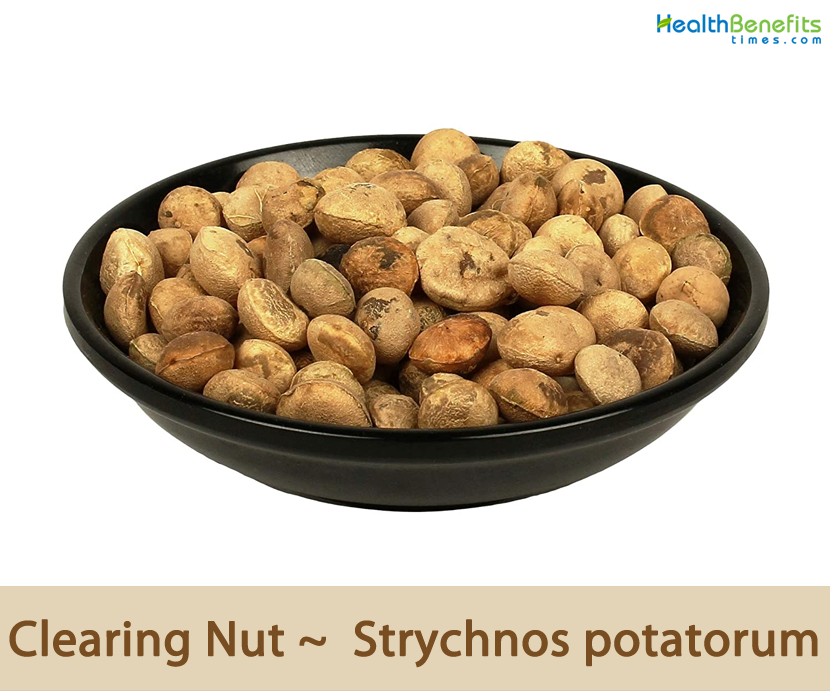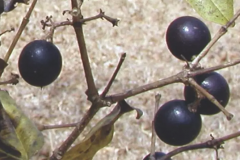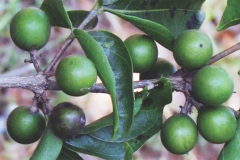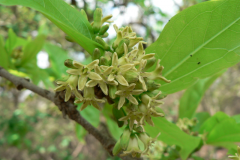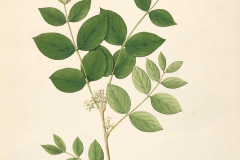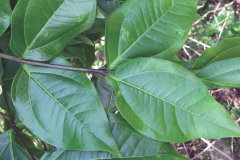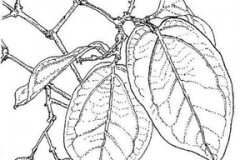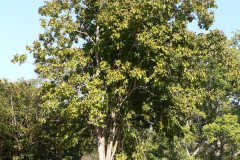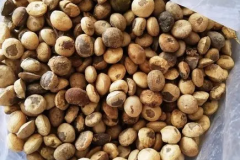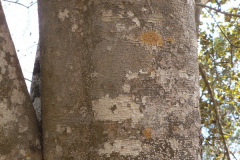Clearing Nuts Facts
| Clearing Nut Quick Facts | |
|---|---|
| Name: | Clearing Nut |
| Scientific Name: | Strychnos potatorum |
| Origin | Tropical Africa, tropical Asia, eastern India, eastern Myanmar, southern and central parts of India, Sri Lanka and Burma |
| Colors | Green when young turning to dark blue when ripe |
| Shapes | Globose berry, 16-18 mm in diameter, soft, blue-black, spherical, pericarp hard |
| Flesh colors | Purplish |
| Taste | Bitter, astringent, sweet |
| Health benefits | Treat eye diseases, Anti-microbial, Treat skin problems, Antioxidants, Treating Jaundice, Improve digestion, Anti-inflammatory, Regulate blood glucose level, Boost immunity |
| Name | Clearing Nut |
|---|---|
| Scientific Name | Strychnos potatorum |
| Native | Tropical Africa, tropical Asia, eastern India, eastern Myanmar, southern and central parts of India, Sri Lanka and Burma |
| Common Names | Ambu-prasada, Chillachettu, Chilladabeeja, Chillaginjalu, Chilu, Clearing nut, Dupa, Gajrah, Induga, Indupachettu, Iriya, Kataka, Katakami, Kotaku, Kuchla, M’tupa, Mitupe, Neimal, Nelmal, Nirmali, Tetan-kotai, Tetran-paral, Tetta, Tettamparel, Tettan cottay marum, Tettran, Toillaghenjaloo, Water-filter nut, chilla, chillikavi, cleaning nuts, clearing nut, clearing-nut tree, clearing-nut-tree, grape strychnos, ingini, kataka, kataka, katakam, kottai, nirmal, nirmali, nirmaliträd, payah prasadisa, tetramabaral |
| Name in Other Languages | Bengali: Nirmali (নির্মলী) Burmese: Hk paungg raykyi pain (ခပေါင်းရေကြည်ပင်) English: Clearing nut, Clearing nut tree, Induga, Water purifying fruit, Chillam, Mudanhapfunye, Nirmali, Tattan Kottei, Black bitterberry, Grape strychnos, Umlombelombe, water-filter nut French: Noix floculante, Noix tamoule, Tetamcottai, Tetâmaram Gujarati: Nirmali (નિર્મલી) Hindi: Nirmali (निर्मली), Neimal, Nelmal Irula: Sillamaram Kannada: Chilladabeeja, Chilu, Chilla (ಚಿಲ್ಲ) Malayalam: Tetranparal, Tetraparel, tēṟṟāmparal (തേറ്റാമ്പരൽ), Chillam, Kadakam, Thettamaram, Thettamparel, Thettamaram Marathi: Chilbing, Chilhara, Gajara, Nirwali Myanmar: Khabaung yay-kyi, mango-taukpa-tit Nepali: Damaai Phal (दमाई फल), Nirmali (निर्मली) Oriya: Kotaku Punjabi: Niemali Sanskrit: Katak, Kataka, Kataka ambuprasada, Ambuprasadani, Ambuprasadanaphala, Chakshushya, Chh edaniya, Guchhaphala, Kata, Kataka, Katakarenu, Kattha, Khataka, Lekhanatmaka, Payaprasadi, Ruchishya, Ruchya, Rushya, Shlakshna, Shodanatmaka, Tiktamaricha, Tiktaphala, Toyaprasadana Shona: Mudanhapfunye, Mudyagudo, Mudyakuwe, Mudyambira Swedish: Nirmaliträd Tamil: Tetamkotai, Tetankotai, Tetta, Tettamaram, Tettran, Terra (தேற்றா), Kalkottai, Kal Kottei, Sillamaram, Sirungamaram, Sirungaru Maram, Tattan Kottei, Thetthamkottai, Sirungamaram, Kal Kottei, Tattan Kottei, Sillamaram, Sirungaru Maram, Kalkottai Telugu: Chillachetu, Indupachettu, Iṇḍupu (ఇండుపు), Cillagin̄ja (చిల్లగింజ), Chilla-gingalu Urdu: Nirmali |
| Plant Growth Habit | Deciduous much-branched shrub or small to medium-sized glabrous tree |
| Growing Climates | Gallery forest, brachystegia woodland, semi evergreen bush land, river banks, banks of dry riverbeds, on termitaries, in dry woodland, along dry water courses and on termite mounds |
| Plant Size | Up to 12 m upon maturity with bole growing up to 100 cm in diameter |
| Stem | Fluted and covered with black, thick, square to rectangular scales. |
| Bark | Bark is 1.32 cm thick, black or brownish-black, corky, with very deep and narrow vertical, thin ridges, which easily break off. Branches are swollen at nodes. |
| Branchlets | Branchlets are pale to dark brown, glabrous, apex modified into a spine-like tip 1–3 mm long. |
| Leaf | Leaves are simple, opposite, estipulate; leaf-stalk 2-8 mm, hairless; blade is 5-15 cm long and 3.5-7.5 cm wide, elliptic, ovate, elliptic-ovate, base blunt or round, tip pointed, margin entire, hairless, shiny, papery. |
| Flowering season | February—May |
| Flower | Flowers are bisexual, regular, (4–) 5-merous, appearing before or with the young leaves. Sepals are fused at base, ovate to oblong, up to 2.5 mm long. Corolla tube is up to 3.5 mm long, lobes oblong, c. 4.5 mm long, acute, spreading, glabrous outside, inside with hairs on the base of the lobes, white, creamy or yellow |
| Fruit Shape & Size | Fruit is a sub-globose berry 12 – 18mm in diameter with a firm pericarp, black when ripe, containing 1 – 2 seeds in a whitish pulp |
| Fruit Color | Green when young turning to dark blue when ripe |
| Flesh | Purplish |
| Seed | Depressed-globose or ellipsoid, 10–13 mm × 9–13 mm × 6–9 mm, slightly glossy, pale brown with an obscure angular line all around, densely silky hairy, smooth |
| Taste | Bitter, astringent, sweet |
| Plant Parts Used | Roots, barks, seeds, fruit |
| Season | October—March |
| Health Benefits |
|
| Culinary Uses |
|
Plant Description
Clearing Nut Tree is a deciduous much-branched shrub or small to medium-sized glabrous tree that normally grows up to 40 feet (12 meters) upon maturity with bole growing up to 100 cm in diameter. The plant is found growing in gallery forest, brachystegia woodland, semi evergreen bush land, river banks, and banks of dry riverbeds, on termitaries, in dry woodland, along dry water courses and on termite mounds. Stem is fluted and covered with black, thick, square to rectangular scales. Bark is 1.32 cm thick, black or brownish-black, corky, with very deep and narrow vertical, thin ridges, which easily break off. Branches are swollen at nodes. Branchlets are pale to dark brown, glabrous, apex modified into a spine-like tip 1–3 mm long.
Leaves
Leaves are simple, opposite, estipulate; leaf-stalk 2-8 mm, hairless; blade is 5-15 cm long and 3.5-7.5 cm wide, elliptic, ovate, elliptic-ovate, base blunt or round, tip pointed, margin entire, hairless, shiny, papery. Nerves are 3-5 from the base, lateral nerves from the midrib 4 pairs, hairless; intercostae net veined, prominent. The petioles are 2.5 mm long.
Flowers
Inflorescence is an axillary lax or congested thyrse 1.5–2.5 cm long. Flowers are bisexual, regular, (4–) 5-merous, appearing before or with the young leaves. Sepals are fused at base, ovate to oblong, up to 2.5 mm long. Corolla tube is up to 3.5 mm long, lobes oblong, c. 4.5 mm long, acute, spreading, glabrous outside, inside with hairs on the base of the lobes, white, creamy or yellow. Stamens are inserted at the mouth of the corolla tube, exserted. Ovary is superior, ovoid or conical, 1–2 mm long, glabrous, 2-celled, style up to 4.5 mm long, stigma small, head-shaped or sometimes obscurely 2-lobed. Flowering normally takes place in between February—May.
Fruits
Fertile flowers are followed by a globose berry, 16-18 mm in diameter, soft, blue-black, spherical, pericarp hard; pulp purplish and smooth. Seeds are depressed-globose or ellipsoid, 10–13 mm long and 9–13 mm wide slightly glossy, with an obscure angular line all around, densely silky hairy, smooth.
Health benefits of Clearing Nuts
Listed below are some of the common health benefits of using clearing nuts
1. Treat eye diseases
Clearing Nut has the ability to provide relief from eye diseases. Seeds of this plant are rubbed in a clean stone and the paste is applied as eye shadow to treat various eye problems.
2. Anti-microbial
In folklore medicine, the Clearing Nut seeds were used for the treatment of various ailments including infectious diseases. The use of seeds in traditional medicine in one form or the other necessitates a systematic evaluation of its antibacterial as well as antifungal activities. Recent studies show Clearing Nut seeds extract possess significant bactericidal and fungicidal effects
3. Treat skin problems
Clearing Nuts is a well-known herb in the Ayurvedic system for treat skin diseases. The paste of the Clearing nuts root is applied over the skin to get relief from eczema and other skin issues. Applying the seed powder externally on the wounds promotes the healing process.
4. Antioxidants
Seeds of Clearing Nut have been widely used in traditional medicine for the treatment of chronic diseases such as diabetes, GI tract complications, and arthritis. These non-communicable diseases are an implicated due to oxidative stress and free radical.
Since it is rich with tannins that work to reduce oxidative stress and free radical damage to our body cells, thus it makes Clearing Nut seed a good source of natural antioxidants to our body.
5. Treating Jaundice
Seed powder of clearing nuts mixed along with honey is an effective remedy for jaundice, rhinitis, and swelling due to anemia. Clearing nuts is also a potent diuretic. It promotes urine in patients with low urine output.
6. Improve digestion
Clearing nuts is loaded with digestive properties. The powder of clearing nuts seeds is given in small amounts to treat indigestion and diarrhea. It is also helpful for people dealing with micro-nutrition.
Clearing nuts is a powerful Ayurvedic herb that is used in the treatment of various diseases including jaundice, diabetes, and eye problems. Unfortunately, not many people know about the incredible health benefits of clearing nuts. So, it is time, we know about this Ayurvedic herb and uses it for the benefit of our health.
7. Anti-inflammatory
In the traditional system of medicine, Clearing Nut seeds were used for various ailments including inflammation, and diabetes. Based on research, had revealed the presence of steroids, triterpenoids, saponins, and polyphenols in Clearing Nut seeds which contribute to anti-inflammatory activities.
8. Regulate blood glucose level
Clearing Nut is a potent anti-diabetic herb in Ayurveda. In Madras, India the seeds are traditionally used in treating diabetes. Based on research, it is proven that seed extract helps in reducing and controlling blood sugar levels and one or more anti-diabetic compounds in the plant extract improve the diabetic condition.
9. Boost immunity
In this current pandemic, we need to keep our immune health in check, and several nutraceuticals with antioxidant and anti-inflammatory effects have a proven ability of immune-boosting. Thus, in the right combination of these pharmacological activities ingredients in the form of a food supplement may help to boost the immune system, prevent virus spread, and therapeutic support against COVID-19.
Traditional uses and benefits of Clearing Nut
- Easily digestible seeds are known to clarify water and to relieve thirst and heat, neutralize poison, alleviate eye infections, and kill germs.
- Paste made from the ground seeds is applied topically in a circle around the eyes to treat eye disorders, improve vision, and clear blood spotting from the whites of the eyes.
- When combined with honey it is applied topically in a circle around the eyes for cataracts.
- Mixture of seed paste with liquid yogurt taken for seven days is considered a cure for chronic, treatment-resistant diarrhea.
- Mixture of milk and seed paste is given as a remedy for gonorrhea.
- Mixture of seed ash and sugar is taken to alleviate bleeding hemorrhoids.
- Paste made with distilled water is used to treat excessive urination.
- Powdered seed coats are used to induce vomiting and treat dysentery.
- Paste made from the root is applied locally to painful areas (mainly due to internal injury) in India.
- Seed is used for a tonic, demulcent, stomachic, and sedative, emetic and also for diarrhea, dysentery, gonorrhea, and eye troubles.
- Leaves are used in the treatment of epilepsy and eye pain.
- Seeds have a wide range of medicinal treatment against liver and kidney problems, stomach problems, gonorrhea, leucorrhea, bronchitis, chronic diarrhea, diabetes, and many others.
- In Tanzania pounded leaves are used to treat watering and aching eyes
- The vapor of a root decoction is inhaled to treat venereal diseases.
- Decoction of the roots and leaves is taken to treat cough.
- Seeds are used for the treatment of a range of complaints including strangury, kidney and bladder stones, and diabetes and eye diseases.
- The monoterpene alkaloid cantleyine, isolated from the root bark, has shown a relaxing effect on isolated tracheal smooth muscles and may be the active ingredient responsible for the anti-cough and anti-asthmatic activity.
- An aqueous extract of the seeds has shown significant hepato-protective activity.
- Methanol extract of the seeds had a diuretic effect and an anti-diarrheal activity on castor oil-induced diarrhea.
- Bark mixed with other herbs is made into a paste with lime juice and applied over the body to cure allergies.
- Roots cure leucoderma whereas fruits are useful in eye diseases, thirst, poisoning and hallucinations.
- In Malawi a leaf decoction is taken to treat epilepsy.
- In Zambia the vapor of a root decoction is inhaled to treat colds.
- In Zimbabwe a decoction of roots and leaves is taken to treat cough.
- In Zimbabwe, Mozambique and South Africa the pounded fruits are used as fish poison and in Zimbabwe crushed bark is also used for this purpose.
- In Tanzania and Zambia the wood is used to make tool handles. In Asia the seeds are used to clear muddy water.
- It is also used for throat troubles.
- In traditional medical systems, seeds used for treatment of hepato-pathy, gastro-pathy, nephropathy, gonorrhea, leucorrhea, diarrhea, renal and vesicle stones, diabetes.
- Powdered stem bark mixed with lime juice given in cholera.
- Paste of seed is reported to be consumed internally along with little tender coconut milk in urinary disorder and retention of urine.
- Seeds powder mixed with honey is applied to boils to hasten suppuration.
- Powder with milk is used in sore eyes.
Medicinal uses
- Seeds are rubbed in a clean stone and the paste is applied as collyrium to treat various eye diseases.
- Powder of the seed is mixed with appropriate amount of honey and applied over the wound for better healing.
- Paste of the root is applied over the skin area affected with eczema.
- Powder of clearing nut seeds is given in a dose of 3-4 gm. to treat indigestion and diarrhea.
- Decoction of the seeds is given in a dose of 40-50 ml to treat renal calculi and difficulty in micturition.
- Decoction of the seeds with haridra helps to reduce and control blood sugar level.
- Decoction of the seed is useful to treat cases of poisoning.
- Powder of the seeds with honey or the decoction of the seed is consumed in a dose of 40 ml to treat jaundice, rhinitis and swelling due to anemia.
- The power of the seed is mixed with an appropriate quantity of honey and applied overwound for better healing of it.
- Seeds of clearing Nut paste are applied as collyrium to treat various eye diseases.
- Paste of the root of clearing Nut is applied over the skin area affected by eczema.
Other Uses
- The wood is not suitable for carving but is ideal for carts, shafts, agricultural implements, tool handles, etc.
- Seed consists of polyelectrolytes which can be used as coagulants to clarify turbid waters.
- In laboratory tests, direct filtration of turbid surface water with the seeds as a coagulant, produced a substantial improvement in its aesthetic and microbiological quality.
- The yellowish-grey wood has conspicuous white markings.
- It is close-grained, very hard and termite resistant, but splits easily and is therefore not suitable for carving.
- It is used to make carts, shafts, agricultural implements, tool handles etc.
- Ripe seeds used for clearing muddy water.
- The tree is associated with Lord Thyagesar
Precautions
- Pounded fruits are used as fish poison.
- Crushed bark is used as a fish poison.
- The plant can cause blindness; caution is required to avoid contact with the eyes when using it to treat eye disorders and other conditions.
- Avoid use during winter season.
References:
https://pfaf.org/user/Plant.aspx?LatinName=Strychnos+potatorum
https://indiabiodiversity.org/species/show/31804
http://www.theplantlist.org/tpl1.1/record/kew-2598232
https://en.wikipedia.org/wiki/Strychnos_potatorum
https://www.flowersofindia.net/catalog/slides/Clearing%20Nut%20Tree.html
http://www.worldfloraonline.org/taxon/wfo-0000502951
http://www.stuartxchange.com/Bukuan
https://hort.purdue.edu/newcrop/CropFactSheets/nirmali.html
https://tropical.theferns.info/viewtropical.php?id=Strychnos+potatorum
https://www.cabi.org/isc/datasheet/51905


